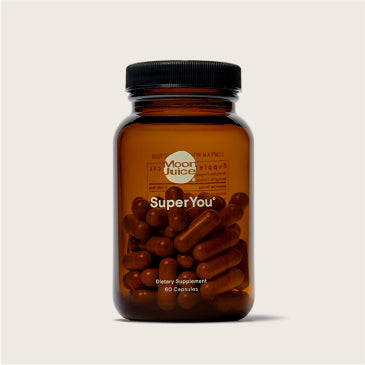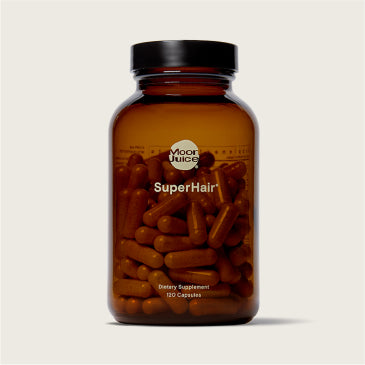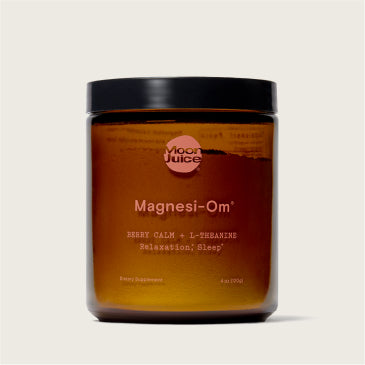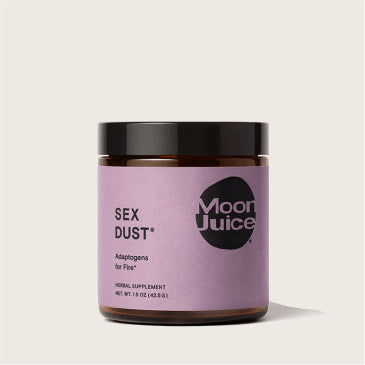Are you sure you’re moisturizing correctly? There’s more to it than just rubbing a dollop of cream onto your face at the end of your skin care ritual. To really get those moisturizing benefits, it’s important to follow a few key tips. Here’s how to apply facial moisturizer, because there’s actually an art to it.
How to apply moisturizer
Each step in your facial routine should enhance the others. Your moisturizing step builds on the hydrators and targeted serums that came before it, locking in those actives so they can do their job. But your moisturizer isn’t going to do you much good if its ingredients are irritating your skin, clogging your pores, or just sitting on top of dry cells that haven’t been properly hydrated. Wondering how to hydrate your skin? Here’s where to start.
Choose the right moisturizer
First things first.
Your skin craves good fat, so it’s good to look for a natural moisturizer that’s rich in Emollient Fatty Acids for your skin.
Cosmic Cream™ is full of essential elements such as natural fats that love your skin’s lipid barrier, plus 3 adaptogens for an additional layer of protection. Free from silicones, parabens, sulfates, and animal ingredients, Cosmic Cream™ has everything your skin wants and nothing it doesn’t.
You’ll also want to be sure that the bulk of the ingredients in your moisturizer are noncomedogenic, especially if you have acne-prone skin. Beeswax, lanolin, and mineral oil, for instance, can all lead to clogged pores and acne breakouts while you’re not watching.
If you have sensitive skin, you’ll also want to choose a moisturizer that’s free of synthetic perfumes. Equally, if your skin tends to be dry, avoid ingredients like perfumes, tea tree oil, and kaolin clay.
Get your skin care steps in order
There’s an order of operations to how you apply products. Here is the method recommended by dermatologists:
- Step one: Cleanse your damp skin with a gentle milky cleanser and lukewarm water.
- Step two: Apply your next skin care ingredients from lightest to heaviest.
- Step three: Apply your moisturizer to seal everything in.
- Step four: Apply sunscreen or makeup on top of your moisturizer.
According to the National Eczema Association, it’s important to apply moisturizer within 3 minutes after washing or getting out of the shower, while your skin is still moist. After applying moisturizer, your skin should feel plump and dewy, but not overly greasy. To make sure your makeup doesn’t slide off your glowing skin, blot any excess moisturizer before moving on to cosmetics.
Apply the right way
To avoid contaminating your product, it’s important to always use clean, dry fingers or a sterile spoon to dip moisturizer from the pot.
Using a coin-sized amount, swipe your moisturizer onto your face after applying your targeted serum. For creams, gently press them into your skin. For gel and water-based moisturizers, you’ll want to apply in circular motions until they’re absorbed into your skin. Gentle pressure can help to move lymph as you massage your face. Don’t forget the vulnerable areas around your face that often get overlooked, like your hairline, neck, ears, and the top of your nose.
Customize your moisture regimen
Your skin changes over time, across climates, and depending on the season. Pay attention to what it’s telling you it needs. If you’re experiencing a lot of dryness, sensitivity, or reactivity or live in very cold winters, make sure to moisturize both AM and PM. If your combination skin is feeling balanced and a hydrating serum does the job, or it’s warm in summer, just moisturize in the evening for overnight restoration.
How does moisturizer improve skin?
Here’s why applying a moisturizer using the above steps can help improve your skin. A moisturizer is designed to do a few things.
It supports your moisture barrier, or the outer layer of skin, and its acidic film that help prevent your skin from becoming dehydrated as the result of trans epidermal water loss (TEWL).
Cosmic Cream™ helps seal in moisture, improves skin’s natural elasticity and barrier function, and protect from accelerated aging and fine lines, blue light, and collagen breakdown.
Depending on its ingredients, a moisturizer can also help hydrate, soften, and smooth the skin. It can also offer active ingredients at a mild concentration to support your personalized skin type and skin care goals.
Why is moisturizer important?
Our bodies rely on our skin barrier to keep moisture in and toxins out. Your skin’s barrier needs to be able to retain moisture not just in order to keep your skin looking plump and hydrated but also to keep it functioning properly to support your overall health. Read more on how to know if your skin barrier is damaged.
Healthy skin is hydrated skin, so it’s important to create a dermal environment where water isn’t constantly escaping.
Sign Up, Nerd Out
Get wellness tips, education, and recipes
delivered straight to your inbox.
Get wellness tips, education,
and recipes delivered
straight to your inbox.
When should you moisturize?
You want to be sure and moisturize AM and PM to keep your skin care barrier intact. In the morning, follow with SPF or use a daily SPF moisturizer — just make sure it doesn’t include harmful chemicals. At nighttime, you might want to use a heavier moisturizing cream or follow with an oil.
It’s also important to moisturize any time you cleanse your face or get in the shower to help replenish moisture to your barrier. Apply moisturizer while the bathroom is still steamy from your shower.
If your skin is extra dry or aging, you might want to apply a lightweight moisturizer midway throughout the day, too. Dab a bit of moisturizer on any areas that feel tight or flaky. If you have an inflammatory skin condition like eczema, you might also want to apply more often.
What ingredients hydrate and moisturize skin?
Hydrators deliver water into your skin, while moisturizers lock it in to prevent water loss. You need both. Here are the different categories of moisturizing properties, scientifically speaking:
- Humectants: Humectants are ingredients that attract water into your skin, either from the vapors in the air, water that’s been splashed onto your face, or water in the deeper layers of your skin.
- Common humectants include AHA, aloe vera, and sugar alcohols like glycerin. The most famous humectant might be Hyaluronic Acid, which can hold up to 1,000 times its weight in water. In order to maximize the moisturizing effects of Cosmic Cream™, use it with a hydrating Hyaluronic Acid serum like Plump Jelly to first introduce a humectant to the mix.
- Emollients: Emollients like the fats in Cosmic Cream™ are oily substances that fill in the areas in between skin cells to help soften the skin. By helping repair the lipid layer of your skin, they support barrier function and maintain skin hydration. Common emollients include oils, butters, ceramides, lipids, and esters.
- Occlusives: Whereas emollients fill in your barrier, occlusives create their own physical barrier on top of your skin’s surface to help you lock in moisture for plump, bouncy skin. Common occlusives include shea butter, waxes, and mineral oil.
The key to a good moisturizing routine is to make sure you’re following the correct order of steps so that you’re locking moisture in, not out, of your face. After cleansing or splashing with water, a moisturizer will help replenish your skin with healthy fats and hydration to support your moisture barrier and keep your skin looking supple. If your feel as though your barrier may be struggling, read more on how to repair your moisture barrier..because it is possible!
Sources
- National Eczema Association, Moisturizer and Lotion for Eczema: Everything You Need to Know https://nationaleczema.org/eczema/treatment/moisturizing/
- American Academy of Dermatology Association, DRY SKIN: DIAGNOSIS AND TREATMENT http://aad.org/public/diseases/dry-sweaty-skin/dry-skin
- British Association of Dermatologists, Use of emollients in dry‐skin conditions: consensus statement http://doi.org/10.1111/ced.12104
- Drugs.com, Topical emollients https://www.drugs.com/drug-class/topical-emollients.html
- National Library of Medicine, The Role of Moisturizers in Addressing Various Kinds of Dermatitis: A Review https://www.ncbi.nlm.nih.gov/pmc/articles/PMC5849435/

-(1).png?v=1682395029304)
.png?v=1682395045464)







